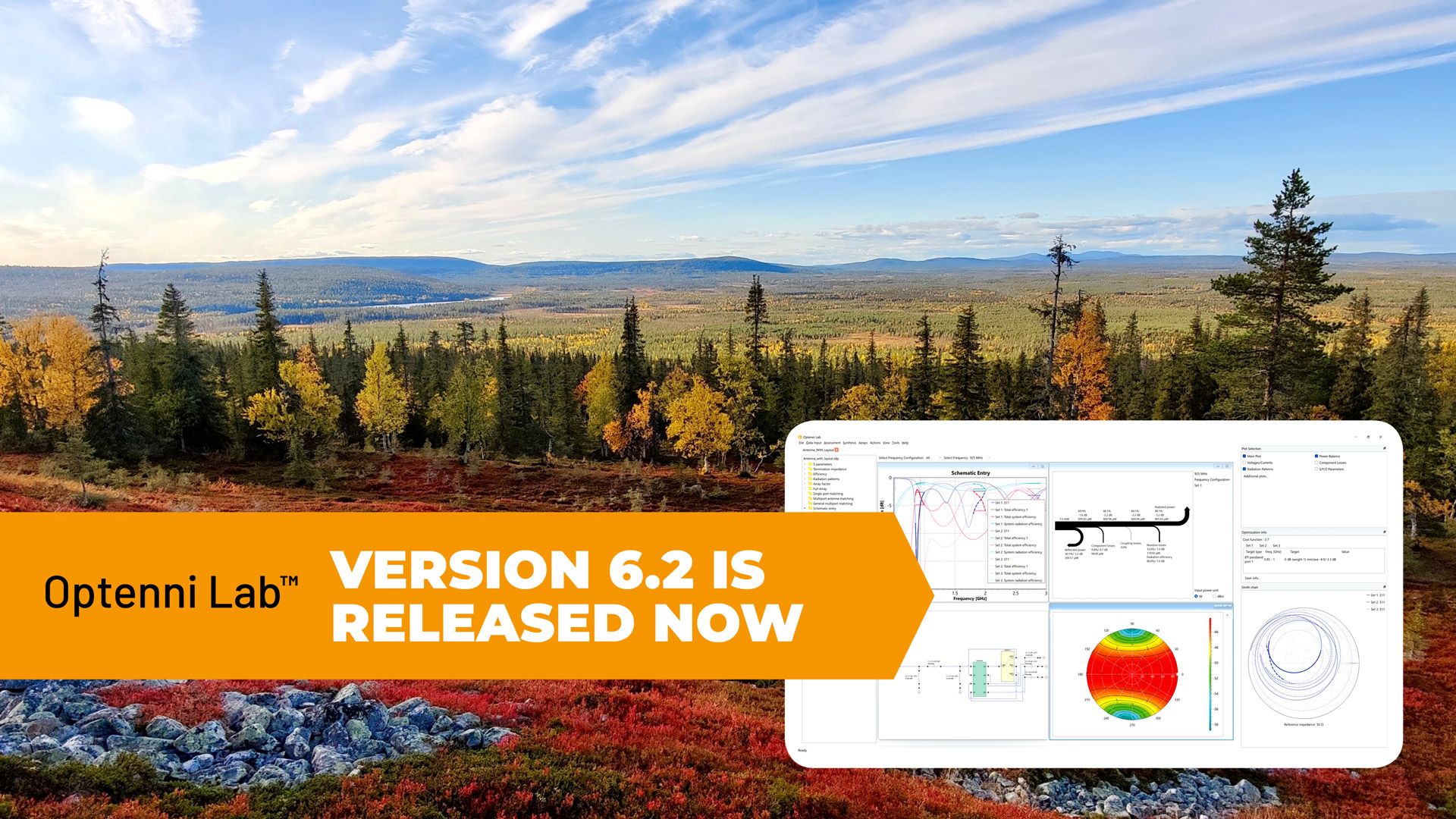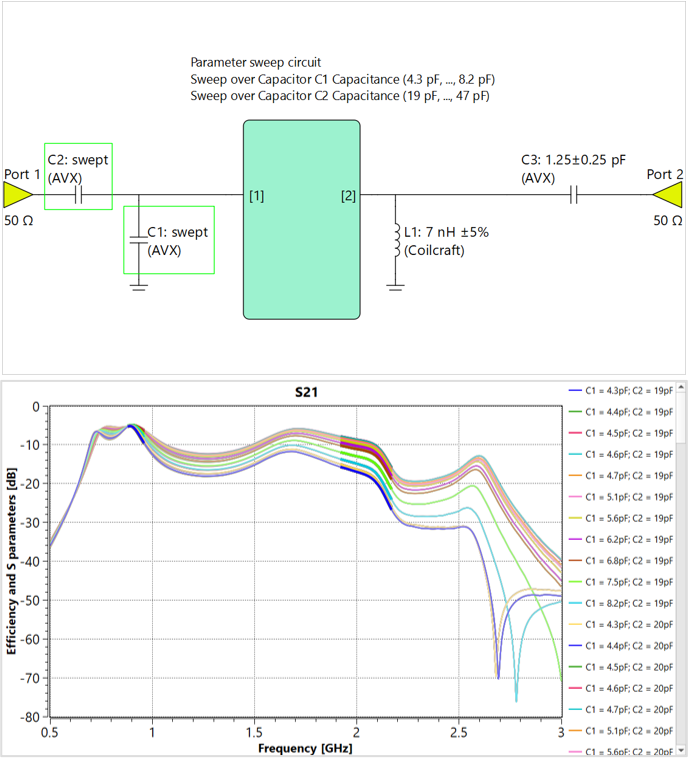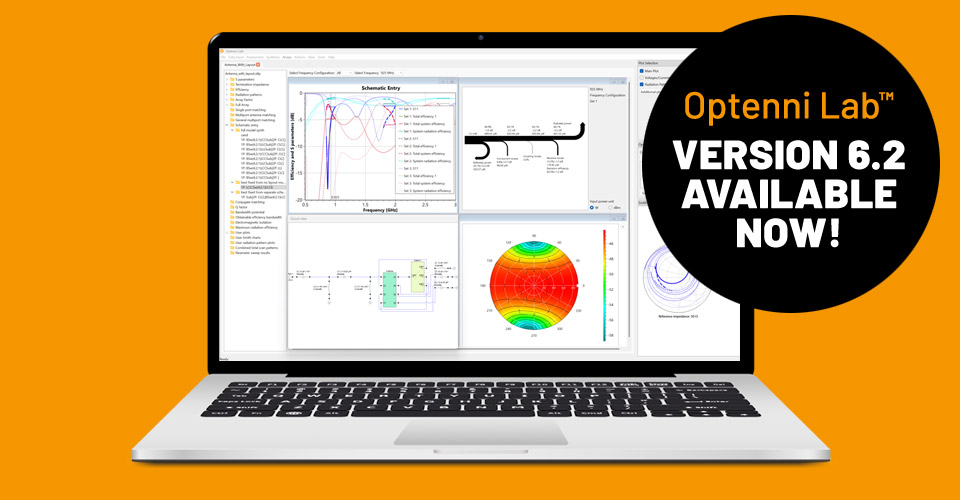
Optenni Lab version 6.2 is released now
Posted by Joni Jantunen | 24 October 2025
As autumn sets in, it’s time for the release of the newest version of Optenni Lab.
Earlier this year, we gathered fresh ideas, listened closely to our customers, and aligned our development plans with our long-term strategy. After several focused steps in product development—and a few iterative pirouettes—Optenni Lab 6.2 is now ready for you.
To experience the new capabilities and enhancements firsthand, update your Optenni Lab version or register for a free trial.
Key new features in Optenni Lab 6.2:
All editions
- Plot selection templates
- Multivariate parameter sweep
- Phase shifter component
Professional edition
- New optimization target: multiport impedance data (for data fitting)
- System passivity as a new plot type
- MDIF files generated with ADS can be used for multiport tuners
- New plots for radiation pattern statistics
Array module
- New optimization targets for radiation pattern statistics
- Total scan pattern can be calculated for a given field component
- CDF (cumulative distribution function) of total scan pattern can be restricted to a custom angular region
Benefits of the new Optenni Lab 6.2 features:
Plot selection templates allow designers to reuse their preferred plots and settings across different circuit topologies. Numbering synthesis results—often a routine step—is now streamlined with automatic numbering. And parameter sweeps now support multiple parameters simultaneously. Together, these features help speed up result analysis in Optenni Lab.
Multiport impedance data, now available as a new optimization target in Professional Edition, is especially useful in data fitting applications—such as fitting an equivalent circuit model to measured or simulated data. Any non-passive behavior in system passivity plots—e.g., for switch models—may indicate the need to double-check the accuracy of de-embedding and component model measurements. Additionally, support for MDIF files generated with ADS expands integration options in the overall design process, especially when working with multiport tuners.
For Professional Edition, new radiation pattern statistics plot options make it easier to optimize antenna performance to meet application-specific requirements. Optenni Lab Array Module goes even further in this area, allowing users to set radiation pattern statistics as optimization targets, calculate total scan patterns for given field components, and to restrict CDF (cumulative distribution function) calculations to custom angular regions.
All these features, along with numerous other enhancements, are provided to our customers in version 6.2, enabling them to explore the theoretical limits, accelerate their design flow, and maximize the wireless performance of their products even better than before.

Parameter sweeps can be run for multiple variables simultaneously.

